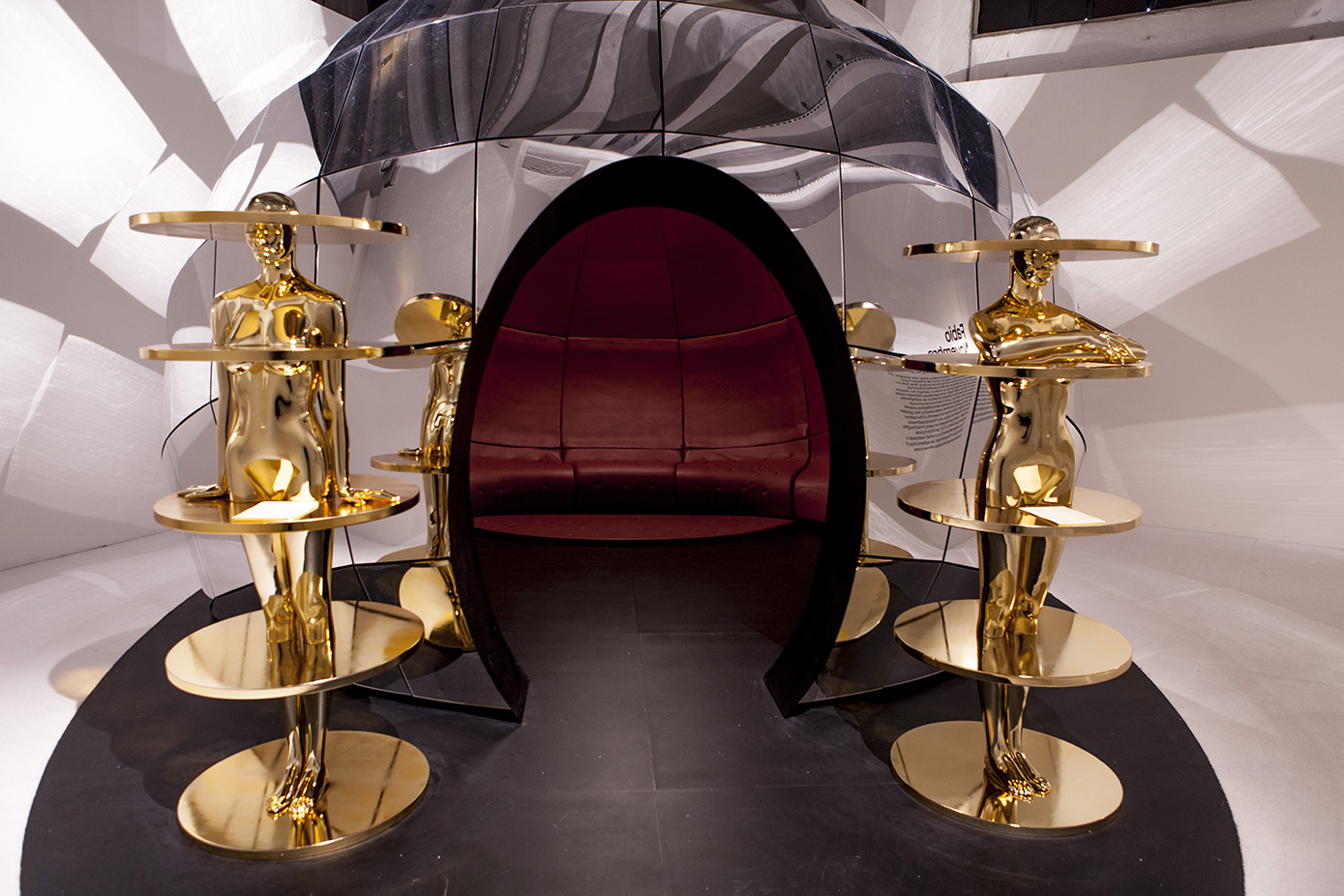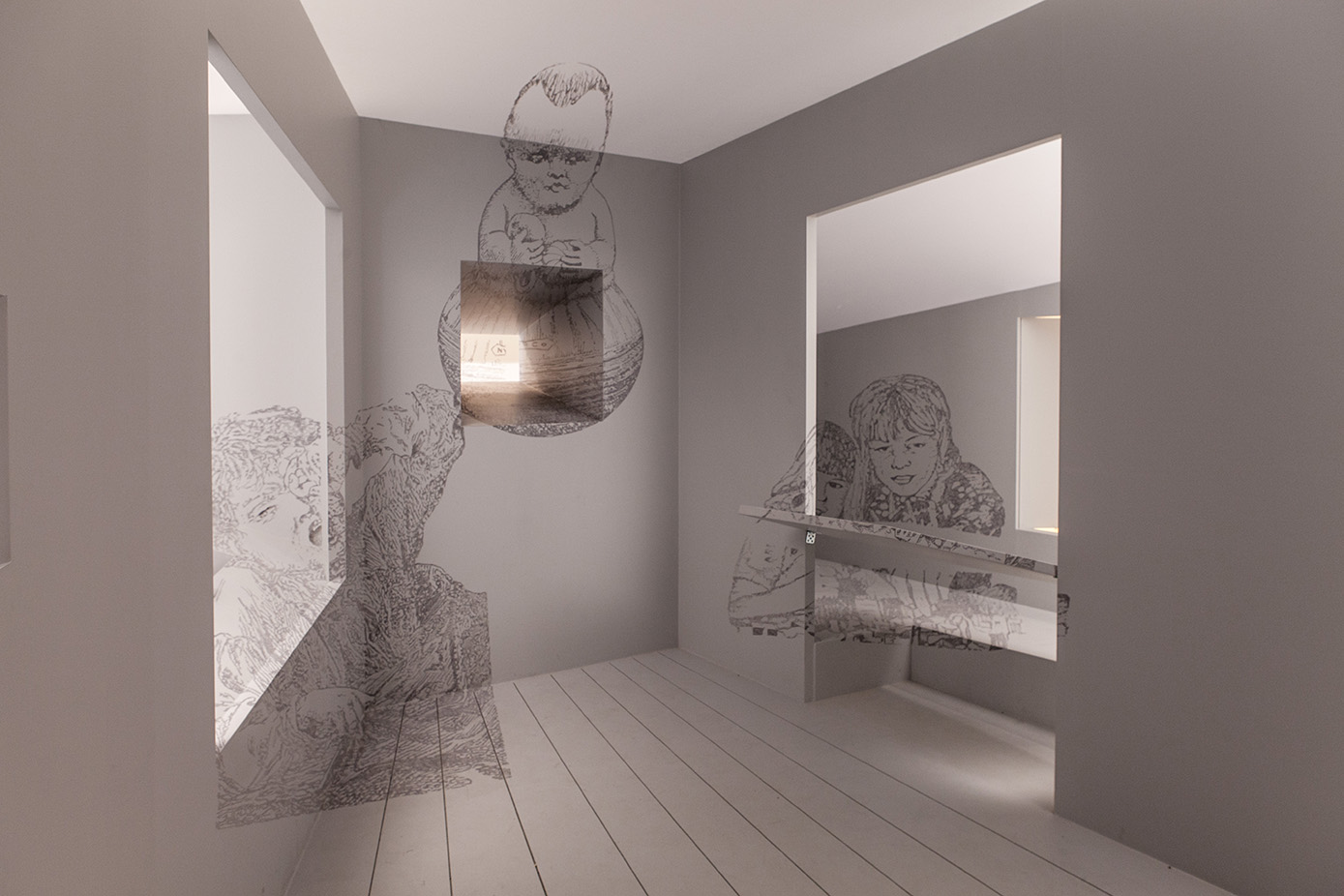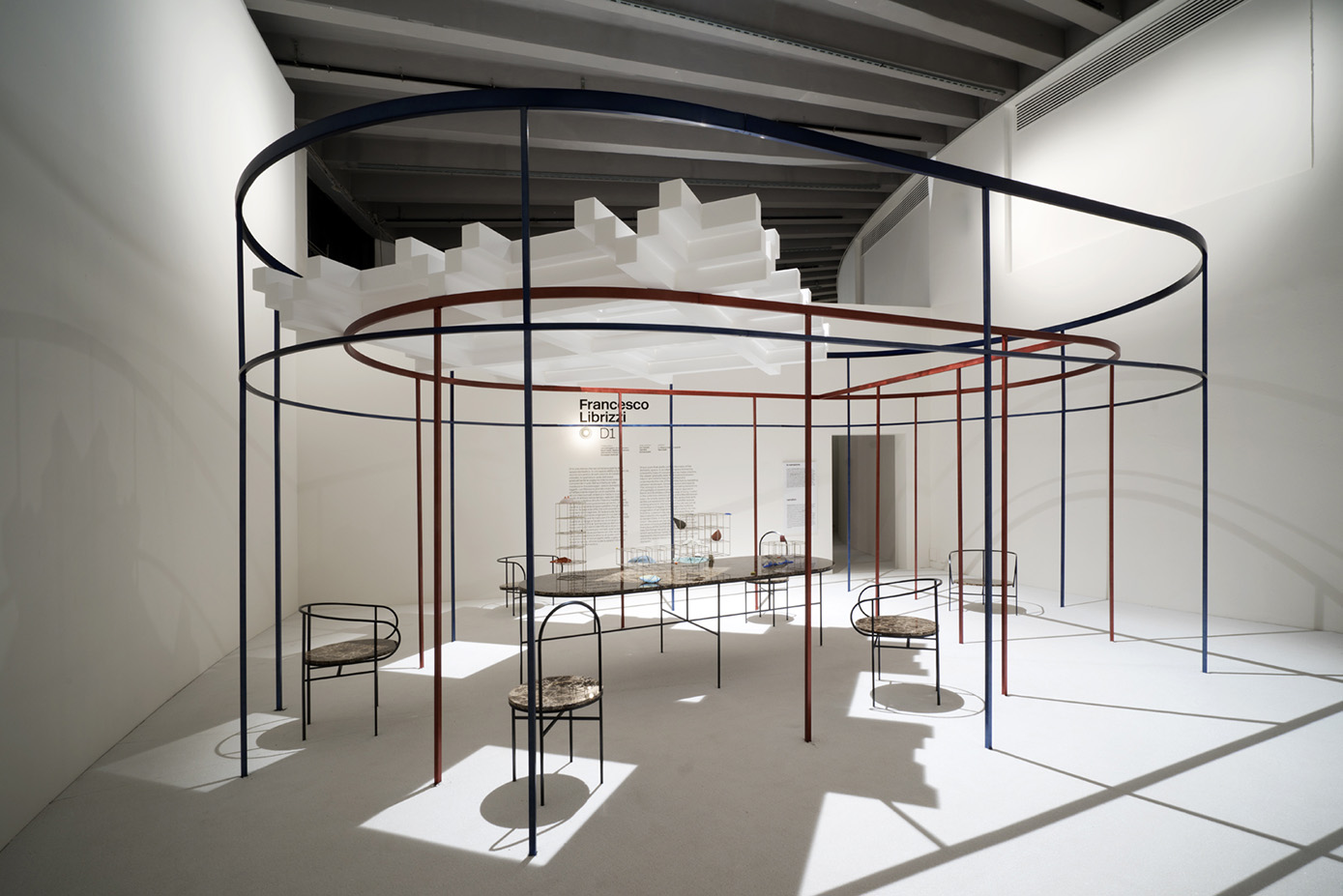22 July 2016
Exactly thirty years after that watershed exhibition called Il progetto domestico (1986), the Milan Triennale is taking another look at interior design with Rooms: Novel Living Concepts, curated by Beppe Finessi. Eleven interiors conceived by the same number of designers provide an opportunity to get to the root of the culture of inhabiting in the anthropological sense, working on spaces, themes and types of intervention. Finessi first of all presents a “grand three-dimensional encyclopedia,” a compendium of photographs, models and drawings recounting the history of interior design in the 20th century. After this journey in time visitors come to a series of staged micro-homes aid out along the so-called Curva, accompanied by literary texts selected by the philosopher Francesco Cataluccio. The sequence is intended to surprise, through the juxtaposition of contrasting visions. Thus, after the minimalist room of Elisabetta Terragni we find Ursus, a work by Duilio Forte that sets out to offer us an experience of living inside a zoomorphic structure: the head-entrance is a sauna and the split-level body has a space for dining, while it is possible to emerge from one of the legs onto the belly, where you feel yourself to be part of nature. Different again is the approach of Manolo De Giorgi, who has created a fluid and continuous setting, free from any rigid subdivision into functional rooms. After Andrea Anastasio, Laudani & Romanelli, Lazzarini Pickering, Francesco Librizzi, Fabio Novembre and Carlo Ratti Associati we come to the grand finale, entrusted to two acknowledged and antithetical masters of design like Alessandro Mendini and Umberto Riva. The former, with his characteristically ironic and autobiographical touch, proposes an “introverted room, an impenetrable mental space, the isolation cell of a romantic and privileged Alcatraz” in which he is serving a life sentence for the “crime of ornament.” The latter has constructed his own Cabanon, the refuge created by Le Corbusier on the Côte d’Azur in 1952, as an exercise to reflect on the essential dimension for humanity.
Rooms: Novel Living Concepts
Curated by Beppe Finessi
Triennale, Milan
April 2-September 12

Fabio Novembre has given the exterior of his room Intro the form of an egg – a shape that has always fascinated humanity and that has been associated with the idea of perfection – and the interior that of a head.

The inside of the egg-head designed by Fabio Novembre.

Elisabetta Terragni’s In Perspective is a fairly closed parallelepiped in which the spaces are concealed and slightly distorted from two perspectives. It is a reflection on the possibility of perceiving space on the basis of different parameters.

The perspective connections between inside and outside in Elisabetta Terragni’s room.

Marta Laudani and Marco Romanelli’s The Absence of Presence is a room that resembles a “scattered piece of equipment” and heightens the tension between hiding and revealing. The house is seen as the “theater of our daily existence.”

Manolo De Giorgi’s Circular Circular room is divided into a series of corridors that free up circulation amongst the different functions of a home and invite visitors to move through this undefined space.

The corridors of Manolo De Giorni’s Circular Circular room, a design that sets out to eliminate the rigid juxtaposition of rooms in their “tessera format.”

Duilio Forte expresses his vision of architecture as an inventive craft practice in Ursus, a house-bear crammed with original living solutions that he has constructed with his own hands and designed to offer an experience of minimal living space inside a zoomorphic structure.

With La Vie en Rose, Claudio Lazzarini and Carl Pickering investigate the technical, aesthetic and ethical potentialities of the new photovoltaic technologies by means of panes of colored glass that define the walls of a minimal housing unit.

Alessandro Mendini’s room is a sort of prison, “an impenetrable mental space” in which to serve a life sentence for the “crime of ornament.” It is built out of Abet laminate, which Mendini says is the origin of his obsession with decoration.

Pixels given material form are the constituent elements of Carlo Ratti Associati’s room Lift-Bit, which presents the first furnishing system connected to the Web, a modular and reconfigurable seat that exploits the technology of the internet of things.

With La petite Chambre Umberto Riva proposes a personal Cabanon, the refuge constructed by Le Corbusier on the Côte d’Azur in 1952. It is a pretext for reflection on the essential dimension for humanity.

Francesco Librizzi’s D1 room is an elliptical space formed by concentric enclosures made of slender columns of colored metal, a way of exploring domestic space and architecture’s role of mediation between landscape, domestic space and objects.

Drawings by De Giorgi exemplifying his design for a fluid-continuous space.

Study drawing of Duilio Forte’s Ursus project.